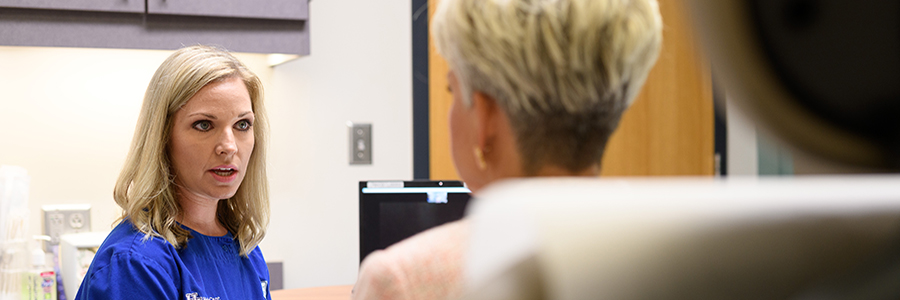
If your healthcare provider believes you may have cervical cancer, you will need certain exams and tests to be sure.You should expect to be asked questions about your health history, your symptoms, risk factors and family history of disease. Understanding your background will help your provider make a diagnosis.
Your doctor will physically examine you, including a pelvic exam and possibly a Pap test.
Following your physical exam, you may have one of the following tests.
- Computer tomography (CT) scan. CT scans are most useful for detecting the stage of the cancer being diagnosed. The scan’s results tell your doctor if the cancer has spread to your lungs, liver or other organs.
- X-ray. An X-ray image at the site of the cancer may reveal abnormalities that your healthcare providers are searching for.
A biopsy removes tissue or cells from the cervix to be checked by a pathologist under a microscope. Results from a biopsy help determine if cells are cancer.
A biopsy is done with local anesthesia by a cervical cancer radiologist. Local anesthesia uses medicine to numb the area of the cervix where a needle will be inserted.
A biopsy may be performed with imaging guidance. Ask your provider about your specific type of biopsy to learn more.
Patients will be contacted after a biopsy by a Markey team member to review results. Further management will be recommended at that time.
When you are diagnosed with cervical cancer, it is common to feel a sense of urgency around starting treatment. However, in most cases, there is time to do the needed research to ensure that your diagnosis is correct. That may include getting a second opinion.
Our team of experts works together to diagnose, treat and prevent cervical cancer, with a focus on individualized patient care.
Markey is among the best cancer centers in the nation, according to U.S. News & World Report, when it comes to advanced treatment options, survival rates and experienced providers. As the first and only NCI-designated comprehensive cancer center in Kentucky, Markey can serve many patients each year with rare and common cancers, including cervical cancer.
Our specialized team is happy to work with your doctors and communicate to ensure confidence in your diagnosis.
Should I get a second opinion?
A second opinion can help to ensure that you will be getting the latest and most effective therapy for treating cervical cancer. The following are common reasons for seeking a second opinion after your initial diagnosis:
- You are having difficulty understanding your diagnosis.
- A dedicated team specialized in your cancer type may not be available in your area.
- There may be uncertainty around the stage of cervical cancer.
- You may want to learn more about different treatment options, including clinical trials and advanced technologies only available at an advanced center like Markey.
- Your health insurance requires a second opinion before continuing toward treatment.
Questions to ask when getting a second opinion
After receiving a cancer diagnosis, you may have a lot on your mind. Here a few questions to keep in mind for your doctor when seeking a second opinion:
- Is there a chance that my medical problem could have a different diagnosis?
- Are there additional tests I should take before moving forward with treatment?
- Do you recommend any treatments at this time?
- What do you expect to happen if I wait or don't have the treatment?
- What are the side effects of treatment?
- How long are treatment recovery periods?
For more information, visit these trusted national sources for a variety of additional educational tools and resources:



















